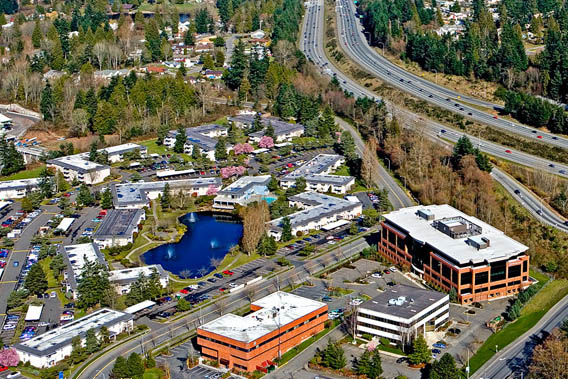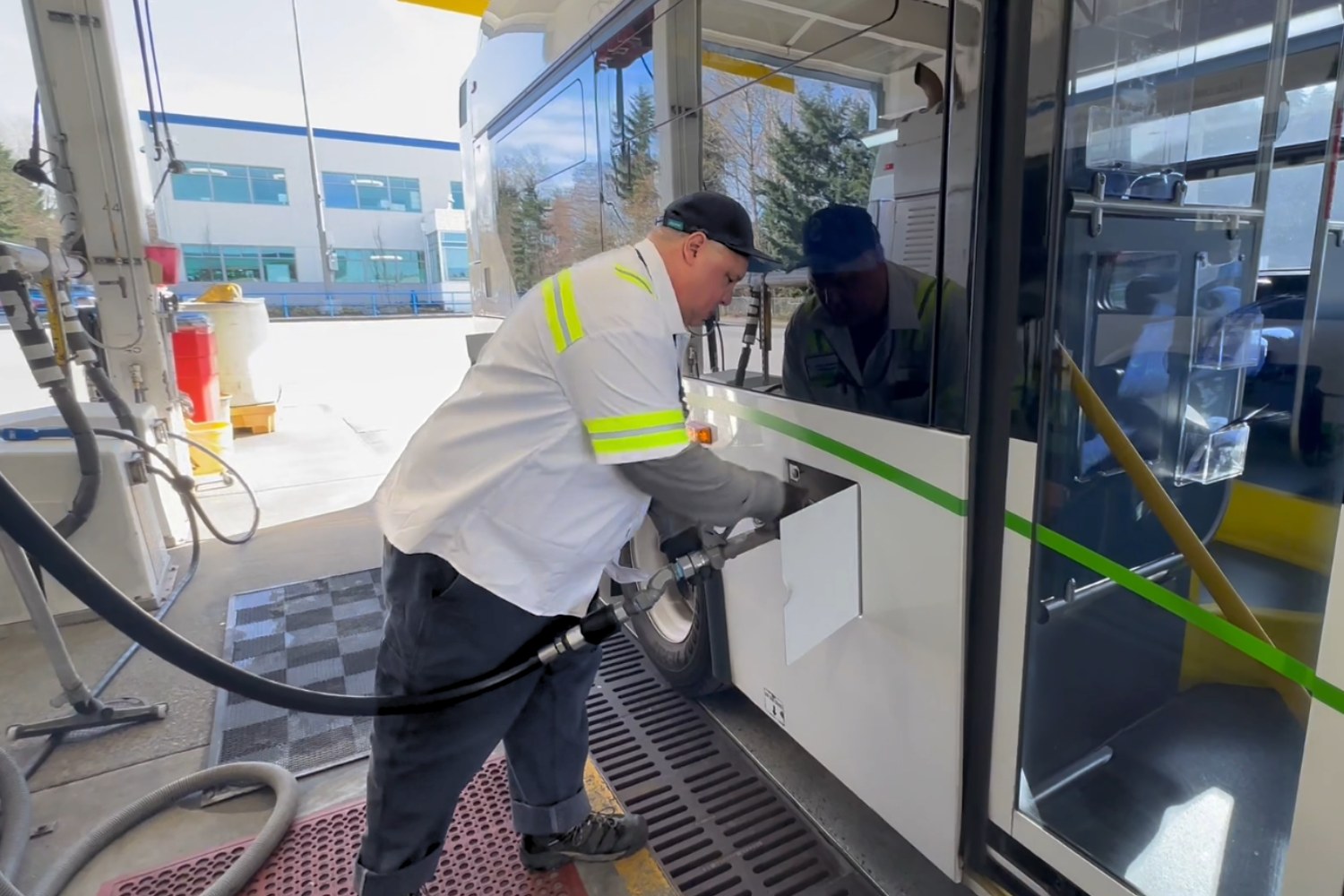Getting around Mountlake Terrace with Community Transit

Community Transit is here to get you where you want to go. We are proud to be a part of the Mountlake Terrace community — we live here, ride here, and drive here. Wherever you need to go in Mountlake Terrace, feel good about how you get there.
About Mountlake Terrace
Mountlake Terrace lies on the southern border of the county, adjacent to Shoreline and Lynnwood, and is 13 miles north of Seattle. The city had a population of 21,315 people counted in the 2020 census.
Some of its most popular destinations include its various neighborhoods — Town Center, Cedar Terrace, Lake Ballinger, Gateway, Cascade View, and Melody Hill.
Major employers in the city include health insurance firm Premera Blue Cross, Umpqua Bank, and the many retailers throughout the city.
People traveling to and from the area can take bus routes provided by both Community Transit and Sound Transit. Mountlake Terrace Transit Center is a major hub for many of these regional transit options. The transit center is also served by a King County Metro route that connects Mountlake Terrace to Shoreline and Northgate Mall in Seattle. Other options include DART paratransit service and Vanpool. Many of its 18 public parks also offer nearby options for pedestrians and bikers, including Ballinger Park which is adjacent to the Interurban Trail. The Interurban Trail is an inter-city hiking and cycling trail developed in the late 1990s that travels between Seattle and Everett on the former interurban railway route.
Sound Transit's Lynnwood Link Extension project began construction in 2019 and will bring Link light rail service to Mountlake Terrace Transit Center when it opens in 2024.
Popular Destinations
Rinse and repeat: Who washes Community Transit's buses?

Pictured above: Tim Vogt, Lead Vehicle Service Attendant, fueling a bus during his shift.
You might not see a Community Transit bus in line at your local car wash or topping off at the nearby gas station. But just like any vehicle, it’s important to keep our buses fueled and clean so that passengers can have a clean and comfortable ride. So, who takes care of these tasks?
Enter Community Transit’s awesome team of Vehicle Service Attendants (VSAs).
They are the “magic” behind a bus driver parking their bus in the bus yard at the end of a long day and coming back to it fueled, cleaned, and ready to go early the next morning.
What does a VSA do?
Typically, one VSA works during the day, with most others clocking in for their shift at about 3 p.m. and finishing after midnight. Armed with Commercial Drivers Licenses (CDL), they can maneuver vehicles within the bus lot. During a normal day, a team of VSAs fuel and wash about 190 buses — rain or shine.
Fun fact: The only time VSAs stop washing the buses is when temperatures drop below 35 degrees because water begins to freeze. As soon as it warms up, they are right back to it!
How do you wash a bus?
The washing process begins with a thorough inspection of the bus exterior and engine for any damage and check of the vehicle’s oil level. Then it's off to the on-site fueling station, where VSAs pump diesel into the buses.
Fun fact: A Community Transit bus fuel tank can hold 100-150 gallons of fuel depending on the model.
After fueling, the VSAs tidy up the interiors of the bus. This includes picking up trash, vacuuming, and mopping the floors. This cleaning is for the every-day grit and grime that might accumulate from riders getting on and off the bus.
For more detailed cleaning, Community Transit hires contract employees who specialize in cleaning. Their weekly deep cleans include wiping windows, dusting, sanitizing surfaces, and vacuuming seats. The contracted cleaners also provide monthly vacuuming and annual steam cleaning of fabric surfaces on the buses.
Next, it's time to drive the bus through the bus wash, conveniently located across from the fueling station. Before going through the wash, VSAs will sometimes give an extra scrub to bus wheels and exteriors if they are especially dirty.
Another fun fact: About 85% of the water used in the bus wash is captured, filtered, and re-used. Fresh water is only used for the final rinse cycle of the bus wash. Sustainability is a big deal at Community Transit!
The bus wash is similar to a drive-through car wash, just bigger. VSAs pull the bus up to the wash and drive through it slowly, making sure that every part of the bus from the front to the back gets clean. It takes about two minutes for a bus to go through the wash. Once the wash is complete, the buses are parked in the lot to dry.
And that’s it! With the buses cleaned, fueled, and ready for action, the VSAs work ensures passengers enjoy a smooth and pleasant journey each day.
